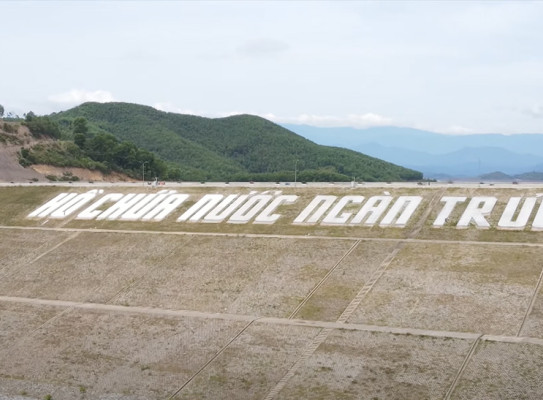
Viet Nam – New Zealand Dam Safety Project

The Viet Nam – New Zealand Dam Safety Project (DSP) is a collaboration between the Governments of Viet Nam and Aotearoa New Zealand with the overall aim to reduce the risk and impact of dam failures in Viet Nam.
Overview
Funded by the New Zealand Aid Programme, the project is being implemented by Viet Nam’s Thuy Loi University, New Zealand’s Damwatch Engineering and GNS Science.
The project aims to
- reduce the risk and impact to the downstream communities caused by flooding from dam failures in Viet Nam
To achieve these objectives, we
- developed a Dam Safety Methodology (DSM) and expert training for dam and disaster management in Viet Nam, including hazard assessment and risk management for dam owners, developers, land use planning and emergency agencies
- provided a framework for Viet Nam to implement the new system throughout the country
The project
Dam and disaster management in Viet Nam
The Viet Nam – New Zealand Dam Safety Project is a collaboration between the Governments of Viet Nam and New Zealand with the overall aim to reduce the risk and impact of dam failures in Viet Nam. Funded by the New Zealand Aid Programme, the project is being implemented by Viet Nam’s Thuy Loi University, New Zealand’s Damwatch Engineering and GNS Science.
The project involves creating a framework for dam and disaster management in Viet Nam, in parallel with implementing the prototype in an example catchment (Ca River basin). The prototype framework will provide Vietnamese dam owners, local communities and government agencies with the skills, tools and processes to dramatically reduce the risk of extreme dam discharge or dam failures. This is achieved by improving risk management practices between dam owners, developers, land use planning and emergency agencies and providing a framework for Viet Nam to implement throughout the country.
Phase One (2012 to 2016, $2.5 million)
Phase One of the project from 2012-2016, the Dam and Downstream Community Safety Initiative (DDCSI), developed guidelines for dam safety assessment in a river basin context. Natural hazards were assessed, dam condition appraised, flood maps produced, and downstream consequences of flood release or dam break quantified. Phase One successfully developed a Dam Safety Methodology (DSM) in the Viet Nam context, and the DSM was accepted by Viet Nam as its preferred approach to address dam safety.
Phase Two (2016 to 2021, $4.6 million)
Phase Two expanded on Phase One by applying the DSM to the Ca River system in Nghe An and Ha Tinh Provinces, the third largest river basin in Viet Nam. A key outcome of this phase was the development of the Dam Rapid Assessment and Prioritisation Tool (DRAPT), which was applied to 150 dams in the Ca River system. This tool prioritises dams for upgrade through an evidence-based risk assessment process.
Vietnam - New Zealand Dam Safety Project Phase 2
Phase Three (2023 to 2027, $7.5 million)
Phase Three of the VNZDSP expands the use of the DSM guidelines and the DRAPT developed in phases one and two to five additional river basins with large high-impact dams across Viet Nam. Phase Three will also deploy the Dam Safety Maturity Assessment Tool (DSMAT) to enable Viet Nam authorities and communities to benchmark the effectiveness of safety activities, emergency preparedness, dam maintenance and governance practices.
The additional river basins include:
- Phu Vinh dam (Quang Binh)
- Truoi dam (Hue)
- Van Hoi and Dinh Binh dams (Binh Dinh)
- My Lam dam (Phu Yen)
- Ea Sup Ha dam (Dak Lak)
Phase three outcomes include:
- Dam owners and operators have access to dam management tools aligned to international good practice and tailored to the Viet Nam context.
- Enhanced capacity for dam safety management of dam owners and managers, community members, provincial and national authorities.
- Communities and provincial entities understand the risks that dams cause to downstream communities and have tools to develop community-based disaster risk management (CBDRM) responses.

Research programme details
Collaborators: Thuy Loi University, Damwatch Engineering, GNS Science, NZ and Viet Nam governments
Duration
10 years (Phases One and Two)
Funding platform
The New Zealand Aid Programme
Status
Phase 1 completed in 2016, Phase 2 completed in 2021, Phase 3 launched in 2023.
Programme leaders
Sheng-Lin Lin, GNS Science
Funder
Ministry of Foreign Affairs and Trade (MFAT)